Phono pick-up cartridges for turntables are designed to read the tiny modulations in a vinyl record's groove and convert the mechanical motion to an electrical impulse (via the law of electromagnetism). This electrical current can then be amplified and delivered through a hi-fi system to be heard as music. It is a critical component to understand when trying to get the best from a turntable-based hi-fi system.
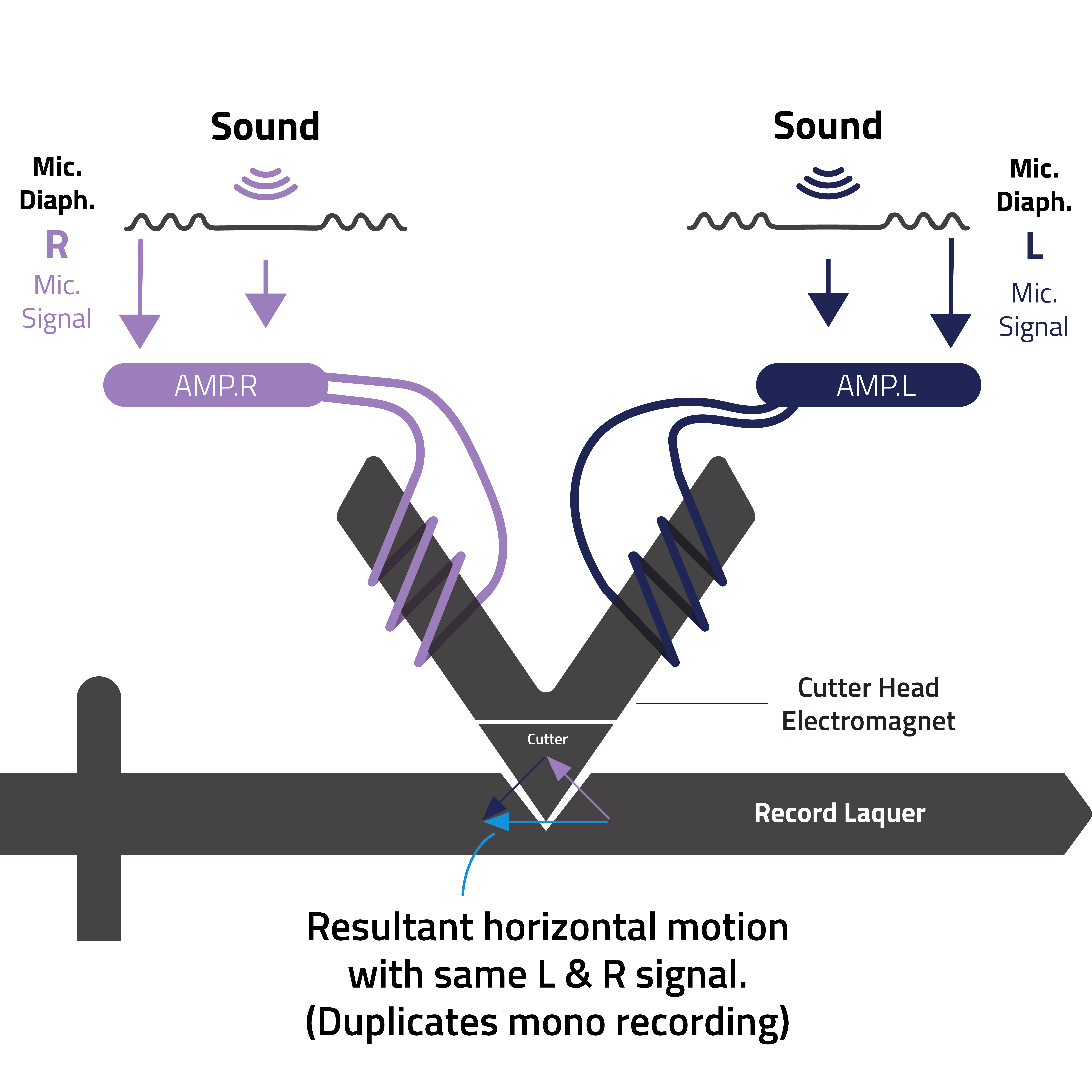
Vinyl records are originally cut by a machine which effectively acts like a hi-fi cartridge in reverse; putting recorded music into the record surface, rather than extracting information from it. Here, our simplified animation helps to explain the process better...
This basic animation shows a cutter head controlled by a Left and Right (stereo) audio signal. The original analogue recording provided from a studio therefore directly impacts how the record groove is cut. The effect of this "cutting" process can be shown when we take a very high-resolution photo of the resultant record groove (see below).
Phono pick-up cartridges are therefore designed to track these movements and modulations in a record wall and convert the mechanical energy they generate into an electrical impulse. To do this, each cartridge requires a Stylus, a Cantilever, and a Generator (made up of magnets and wire coils) to work.
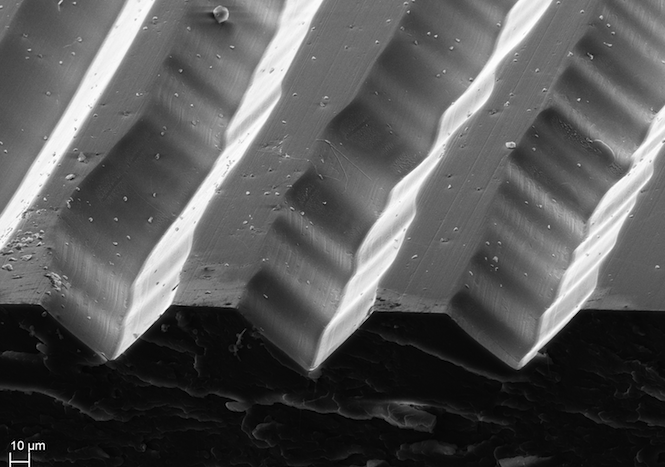
Image taken from Vinyl Factory.
Diamond is chosen as the material of choice for reading a record groove because it is an incredibly hard material that will not degrade considering the huge forces that are applied to it when playing back a record. When set up correctly, it will also not rapidly degrade a record groove.
Because of the costs of sourcing diamond as a material, some more affordable cartridges have tipped diamonds – where the diamond is mounted onto another hard material, which in turn is mounted to the cantilever. More premium designs are classed as ‘Nude’ because they are a single piece of diamond connected directly to the cantilever. Using a one-piece diamond has obvious benefits for optimum transmission of the music signal.
How the diamond is cut to read the record groove strongly influences the eventual musical performance of a pick-up cartridge. Broadly speaking, there are three types of stylus profiles in wide use today. At the higher end there are more unique designs, but here we will only mention the most common.
Please Note: "Stylus" is a term often used interchangeably throughout the process of discussing phono pick-up cartridges. The two most common uses are as follows...
Technically the stylus is the diamond tip which rides in the record groove, as discussed on this page.
Commercially, we refer to the stylus as the interchangeable part on a moving magnet cartridge. In this case, the stylus is actually the diamond, the cantilever and the housing surrounding them.
Below are four drawings of a record groove. The first image shows the profile of an original cutting stylus – obviously, this is what dictates the level of detail in a record groove so it touches every part of the record wall. The second image shows a Spherical stylus in the groove. Spherical styli are the most common and most basic profile; they are easier to manufacture, so they are more affordable, but they pick up little information from the record wall and also put high amounts of pressure on localised parts of the groove. The third image shows an Elliptical stylus in the groove. Elliptical styli have their sides polished so they read more of the groove, but are still at the more affordable end of the price spectrum. Finally, the fourth image shows a Fine-Line stylus in the record groove. Fine-Line styli are often found in more premium designs and boast an optimized polished profile, which allows for far greater contact with the record wall, deeper into the groove.

Diagram of a Cutting Stylus
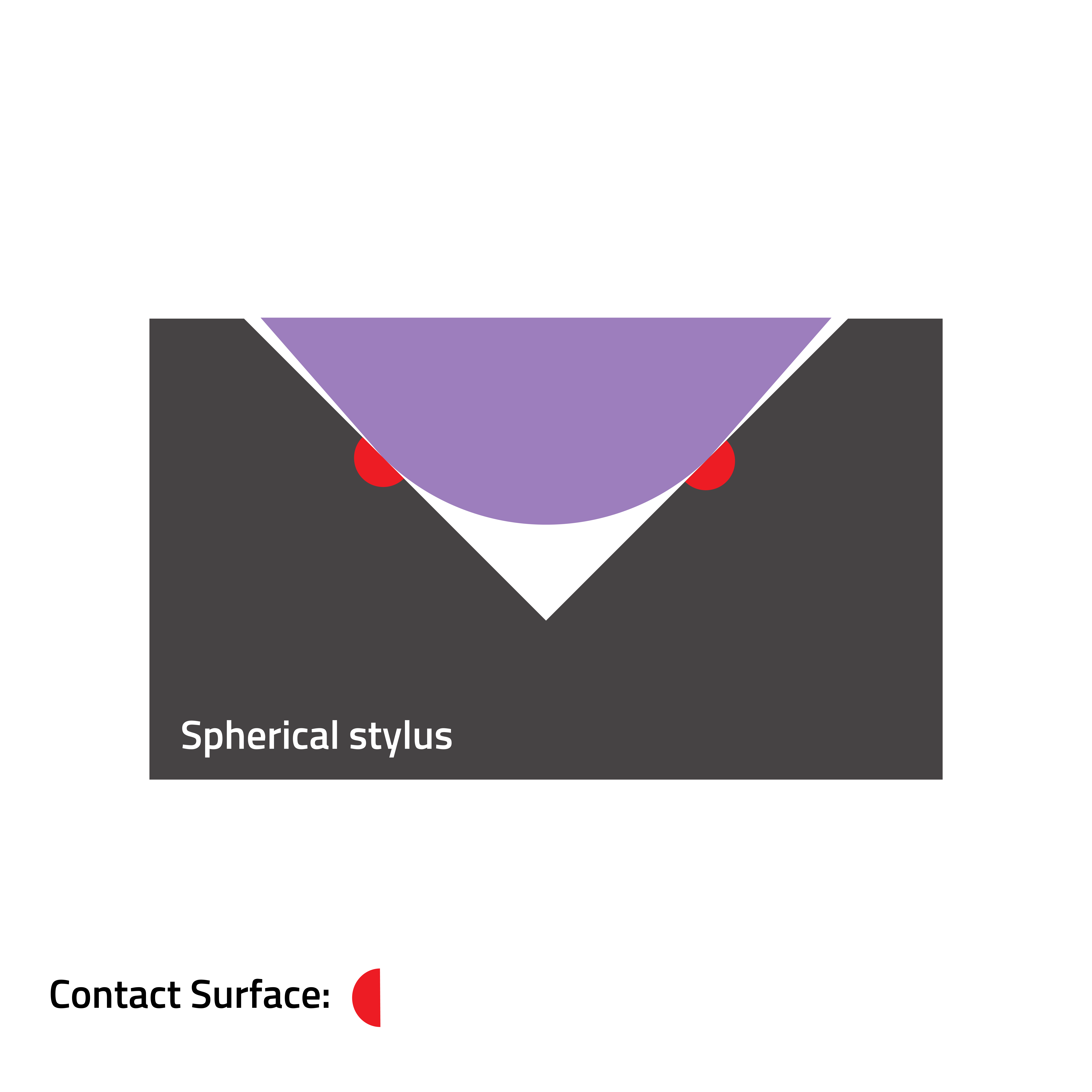
Spherical stylus
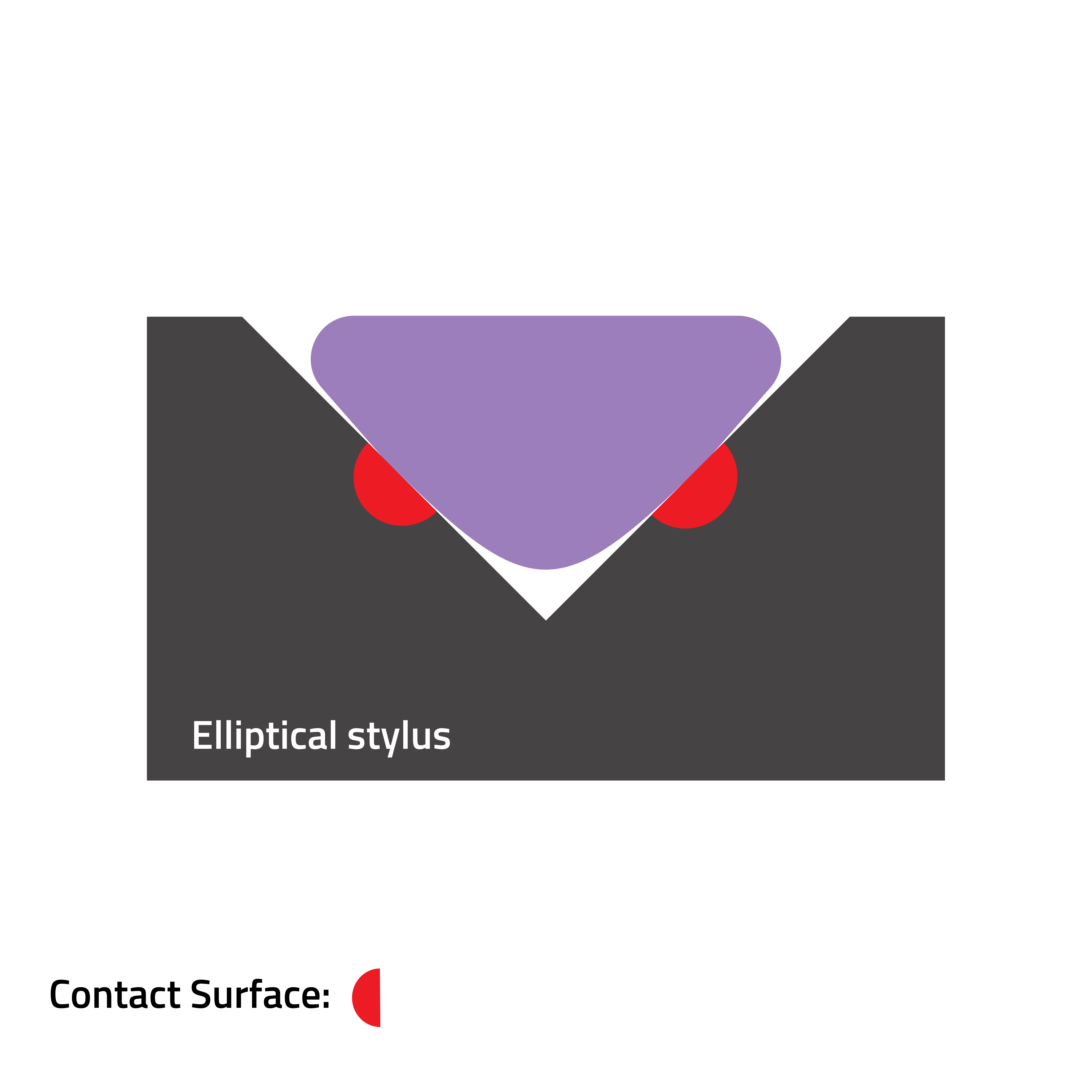
Elliptical stylus

Fine-line Stylus
The end result of these different stylus profiles is greater information retrieval from the record groove. The greater contact area the stylus makes, the more musical detail you will be able to extract and hear through your hi-fi.
The cantilever is the intermediary between the diamond stylus and the generator system. This tiny rod - often made of aluminium, but also available in other exotic materials at the more premium end of the market - has to mediate the huge variety of forces the stylus is placed under as it rides through the record groove. In order to do this effectively the cantilever has to be both light and rigid. If it was too heavy, many of the stylus's movements would be muted, and similarly if the cantilever was too flexible it would bend and introduce distortion and colouration to the musical output.
The cantilever is managed in its movements by a suspension system. Companies such as Ortofon are experts in rubber composition, allowing them to produce rubber suspension systems that allow the cantilever to maintain control while reacting accurately to the stylus' forces.
The generator system takes the mechanical movements of the stylus and the cantilever, and converts them to electrical signals that represent the musical information. There are two types of generator systems in common use today: Moving Magnet (MM) and Moving Coil (MC). Typically, MM cartridges are at the more affordable end of the price spectrum because of the extra level of micro-engineering involved in MC manufacturing.
In a moving magnet cartridge, a magnet is mounted onto the cantilever and placed between a set of tightly wound coils. As the cantilever moves, so the magnet moves within the field of the surrounding coils (hence the name), therefore creating electrical energy.
The coil system in a moving magnet cartridge are wound by machines with up-to 3,000 turns per-coil. This results in a high output of around 5mV. Moving Magnet cartridges can also have replacement styli applied when the cartridge becomes old or damaged.
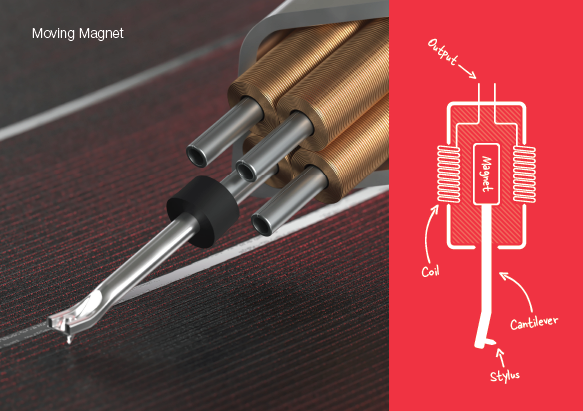
Within a moving coil generator system the coils are attached directly to the cantilever and placed within the field of a powerful magnet. Here far fewer coil turns are used - typically around 15-20 turns - and the moving mass is greatly reduced. The result is a cartridge with a far lower output, but one that is able to extract greater nuance and detail from a record groove. Because the coils are attached directly to the cantilever, it's also not possible to replace the stylus only.
Due to their lower output, MC cartridges also require an MC compatible phono stage or a step-up transformer to help achieve all the gain required for your hi-fi system.
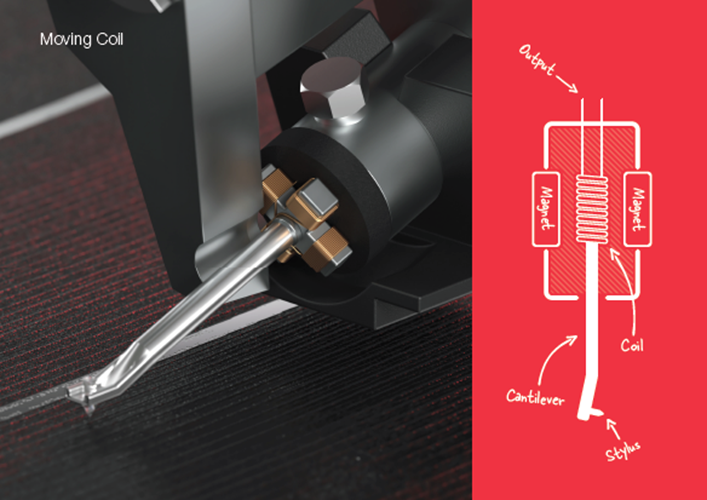
Now you understand how cartridges work, it becomes easier to understand how different material and design choices can make cartridges better performers or more suited to your tastes and needs. We already saw above how different stylus profiles change the information that can be retrieved, but every part of the design has an impact on the sound. So if we dissect a high-end cartridge we begin to understand all of the design choices we can look out for in other cartridges...
For example, the MC Diamond features a highly polished Ortofon Replicant 100 diamond stylus mated to a diamond cantilever - because then the cantilever is also perfectly rigid and still light. It also features a Multi-Wall Carbon Nanotube rubber suspension system for improved damping and perfect handling of the cantilever. Similarly, it uses the finest coil material available to ensure there is no loss. Finally, the entire workings are housed within a Selective Laser Melted Titanium body for its excellent high internal damping and reduction of surrounding vibrations. The result is a stunning high-end cartridge, but it also serves as a guide for good technologies to look out for regardless of your budget.